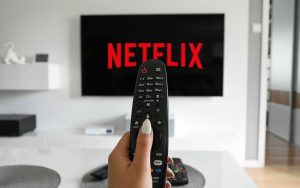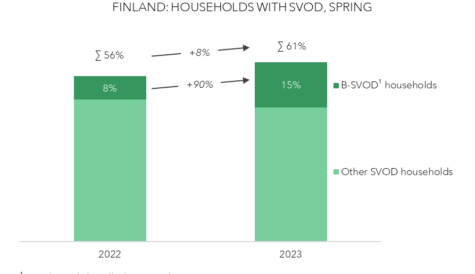
After more than 40 years of operation, DTVE is closing its doors and our website will no longer be updated daily. Thank you for all of your support.
Value ad: Netflix, Disney and the hybrid streaming model
With this week’s launch of Disney’s ad-supported streaming option and Netflix’s recent decision to sign up to audience measurement in the UK with BARB, it seems that subscription streaming with advertising has definitively arrived. But how big is this subscription-plus-ads model likely to be?
Netflix and Disney were both present at this week’s Future of TV Advertising Global summit in London. Jeremi Gorman, president of worldwide advertising at Netflix and Rita Ferro, president of advertising at Disney, were separately on stage to introduce themselves to the ad-buying community.
Disney’s ad-tier launch of Disney+ in the US the following day saw it claim over 100 advertisers for the service. For those outside the US keen to trade an obligation to watch ads for a discount on their monthly bill, the international rollout of the service will begin next year.
Netflix, meanwhile, stole a march on its rival by launching its Basic with Ads offering in November, a launch that met with far from universal acclaim. Criticism focused on the inconsistency of the frequency and positioning of ads and the absence of key titles from the programming line-up because of licensing issues.
Speaking to UBS analyst John Hodulik at a UBS TMT conference this week, Netflix co-CEO and chief content officer Ted Sarandos played down the issue of licensing conflicts, saying that “about 90%” of what Netflix’s audience watches is available on the tier. He said there would be “near parity” with the non-ad Netflix over time as legacy deals “flow off or get re-negotiated”.
Digital TV Europe’s sister research arm Omdia has predicted that as many as three in five Netflix subs will be on the streamer’s ad-supported tier by 2027, but Netflix itself remains somewhat cautious about how big it expects the ad-supported version of the service to be. At the UBS event, Sarandos said that the ad tier was “growing” but declined to predict how big it would grow over five years. He said that the introduction of ads “opens the market up” for Netflix by enabling it to appeal to a younger, ad-tolerant demographic that “we’ve not been appealing to before”.
Sarandos also said that the ad tier could help prevent churn, particularly by working in tandem with Netflix’s “paid sharing” initiative to convert password-sharing customers to paying customers.
“The ad tier gives a place for paid sharing to land. You think about potential for a softer landing for folks either who are paying for the first time or for who are looking, who have some economic strain today,” he said.
Ultimately, Sarandos said, Netflix was still at the “crawl” stage of what should turn out to be a “crawl, walk, run” progression of its advertising business. He also spoke of the likelihood of “multiple ad tiers over time”
Evolving business
Evolution of the ad business could also aim to lean on Netflix’s consumer data by targeting in more sophisticated ways than the current offering. Sarandos gave the example of delivering multi-part ads to subscribers “because we know exactly which part you’ve already seen” – an example that stayed somewhat clear of the kind of creepy hyper-targeting that streamers may be wary of at this stage. How targeted advertising on TV ties in with the new world of stringent data protection rules is still very much a work in progress.
For now, as Sarandos indicated, Netflix is leaning into its reach rather than its ability to deliver value through granular targeting to sell the proposition to advertisers. While acknowledging that there a “possible large upside” in delivering more ad revenue per subscriber than the discount on the ad-tier subscription, he made it clear that this is not the current focus.
“In the CPM universe, you either grow CPMs or just grown Ms. So right now, we’ve got a lot of eyeballs to watch Netflix, and if they watch in the ad tier that will grow Ms,” he said, adding that “the better and better you get at the product itself, you can grow CPMs as well.”
Netflix Basic with Ads is available in the UK and Australia as well as the US. But as with targeting, how fruitful the ad-based streaming model will be internationally is also still very much a work in progress, with TV advertising practices differing greatly between markets. At the UBM event, Sarandos also acknowledged that “a big chunk of the TV ad market is the US” and that this would deliver a good proportion of the “upside” of the advertising-supported tier.
Ad-supported SVOD is very much the streaming flavour of the moment. The big streaming service providers that have sunk massive amounts of cash into original content to capture market share as the appetite for streaming grew now face a need to show a return at a time when consumers’ discretionary income globally is under pressure. That pressure will not only have a negative impact on the amount that people spend on subscriptions but also on the size of the available advertising pie, at least in the short term.
The attractions of making money through advertising from an attractive audience already invested in using something they are paying for are considerable. For every Viaplay, which remains sceptical, there are many others who see an opportunity. But with targeting currently limited and streamers anxious to avoid cannibalising their existing premium base, hybrid ad-supported streaming has some way to go to really prove its worth.



